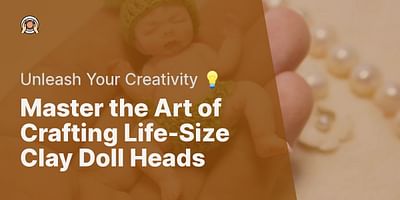Amy Roberts is a dedicated clay artist, boasting over a decade and a half of experience in the realm of clay crafts. Her expertise lies in crafting exquisite polymer clay jewelry, and she finds joy in imparting her wisdom to fellow artisans in the craft community.
When it comes to making pottery, choosing the right type of clay is essential. Different clays have different properties, and selecting the best clay for your pottery project can greatly impact the final result. Let me guide you through the various types of clay for pottery, so you can make an informed decision.
One popular type of clay for pottery is earthenware clay. This clay is known for its low firing temperature, typically between 1,800 and 2,100 degrees Fahrenheit. Earthenware clay is easy to work with, making it a great choice for beginners. It is also more porous than other clays, which means it may not be suitable for functional pottery like mugs or bowls that need to hold liquids. However, it is perfect for decorative pieces and sculptures.
Another option is stoneware clay. This type of clay is fired at a higher temperature, usually between 2,200 and 2,400 degrees Fahrenheit. Stoneware clay is durable and versatile, making it a popular choice for functional pottery. It has a higher firing temperature, which allows for a wider range of glaze options and produces a more durable finished product. If you're looking to create pottery that can withstand everyday use, stoneware clay is a great choice.
Porcelain clay is often considered the queen of clays. It is known for its smooth and delicate texture, as well as its translucent appearance when thin. Porcelain clay is fired at high temperatures, similar to stoneware clay, and is ideal for creating fine and delicate pottery pieces. However, it can be more challenging to work with due to its tendency to warp during the firing process. If you're up for a challenge and want to create elegant and refined pottery, porcelain clay is worth exploring.
Now, let's talk about polymer clay. While not traditionally used for pottery, polymer clay offers unique possibilities for creating clay sculptures and decorative pieces. Unlike natural clays, polymer clay is synthetic and does not require firing in a kiln. It can be cured in a regular oven at a low temperature. Polymer clay comes in a wide range of colors and can be easily molded and sculpted. It is an excellent choice for beginners or those who don't have access to a kiln. For more on this, you can explore the endless possibilities of polymer clay art.
In conclusion, the best type of clay for making pottery depends on your specific needs and preferences. Earthenware clay is great for decorative pieces, stoneware clay is ideal for functional pottery, porcelain clay offers elegance and delicacy, and polymer clay provides versatility and convenience. Experiment with different types of clay to discover which one suits your style and desired outcome. If you're interested in learning more, check out our tips for aspiring potters. Remember, the journey of pottery-making is as important as the final result, so have fun and let your creativity flow!
Keywords: best clay for pottery, types of clay for crafts, pottery making techniques, unique clay creations, pottery clay techniques for beginners, oven-baked clay vs fire clay















